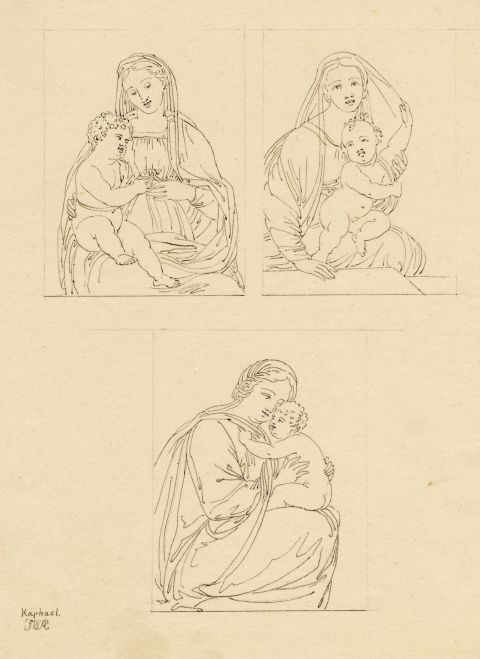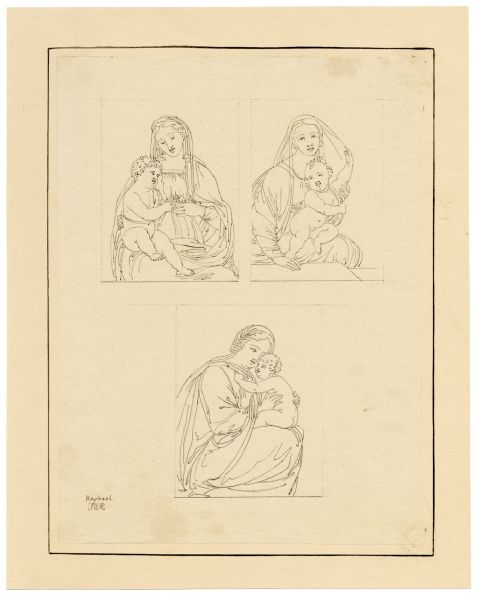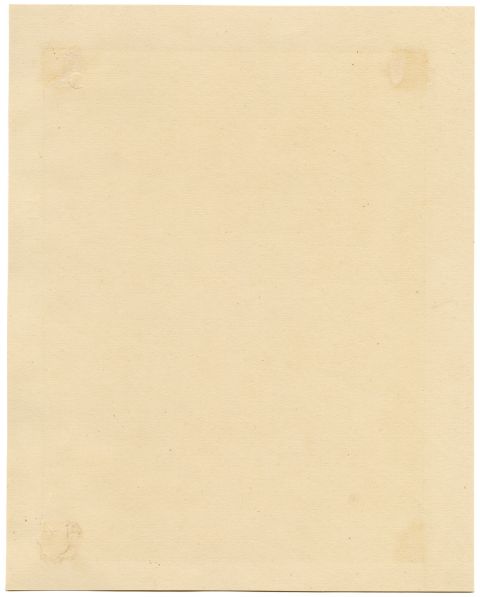This website uses cookies to ensure you get the best experience on our website. Learn more.
John White Abbott, Madonna & Child after Raphael – c.1805 ink drawing
Collection: John White Abbott 1763–1851
An original c.1805 pen & ink drawing, John White Abbott, Madonna & Child after Raphael.
A sheet of remarkably precise ink drawings by John White Abbott (1763–1851) after Raphael.
This drawing is one a series of linear ink studies by John White Abbott after the Old Masters. Although overwhelming a landscape artist, Abbott is known to have studied Old Master prints, and his figures and animals in his landscape compositions are usually classical in nature rather than freely observed. These ink studies are evidence of Abbott's connoisseurship and his status as a gentleman amateur rather than a professional landscapist.
For an example of 'Old Master' animals in a landscape by Abbott, see British Museum no. 1880,0313.22. For a further example of a drawing after an Old Master print see BM 1860,0211.347. An example of an Italianate landscape oil with figures can seen at the Yale Center for British Art, Paul Mellon Collection no. B1976.7.1, as well as a Classical Composition after Annibale Carracci, no. B2013.5.
Ink with traces of graphite underdrawing, on thin wove paper laid down on original backing paper.
Provenance: Sotheby’s sale 21 March 2002.
All artworks come with a Certificate of Authenticity and—if it is a collection artwork—its accompanying collection text or artist biography.
Details
Signed: Initialled lower left.
Inscribed: Inscribed lower left.
Condition: Some minor marks. There is a small repaired tear to the backing paper at the lower right corner. Please see photos for detail.
Presented: Unframed.
John White Abbott 1763–1851
John White Abbott (1763–1851) was born in Exeter, Devon, where he practiced as an apothecary and surgeon. A keen amateur artist, he socialised in the same genteel Exeter circles inhabited by Francis Towne (1739 or 1740–1816), who was a close friend of Abbott's uncle, James White. Abbott took lessons from Towne from a young age and became an important friend and patron of Towne. He closely emulated Towne's style, producing topographical drawings with precise ink outlines and flat and clear washes of colour. The majority of Abbott's subjects were local to his native Devon. In 1791 he made his only extended journey outside the West Country, a sketching tour of Scotland, the Lake District, Lancashire, Derbyshire and Warwickshire, and in 1797 he toured Monmouthshire. Between 1793 and 1812, Abbott exhibited intermittently at the Royal Academy, as an honorary exhibitor, and his oils were more highly praised than those of Towne. But it is said that he never sold a picture, all works remaining in the family and Abbott living the life of a gentleman amateur. Abbott was also a connoisseur of Old Master prints and this study informed the composition and figures that he used in his landscapes. In 1825 Abbott inherited Fordland, a Devon estate, from his uncle James White. From this time on he was able to devote himself solely to drawing. In 1827 he again visited Monmouthshire, and also Gloucestershire and Wiltshire. In 1831 he was appointed a deputy lieutenant of Devonshire. His work can be found in numerous public collections, including the British Museum, Victoria and Albert Museum, Ashmolean Museum, Fitzwilliam Museum, the Royal Albert Memorial Museum, Exeter, and the National Gallery of Scotland.
View the full collection John White Abbott 1763–1851



